Driven by Forward Thinking Distributors and Property Developers, Virtual Power Plants are Growing Globally. Are Costa Rica and Honduras Missing Out?
Virtual Power Plants (VPP) unlock flexible and resilient energy capacity and as a result, are transforming energy markets. Although growing quickly around the globe, VPP’s are almost absent in Latin America. A virtual power plant (VPP) is an energy platform that uses new technologies such as artificial intelligence (AI), cloud computing, internet of things (IoT), and renewable energy generation.

The Internet has changed the world including the world of energy. With plummeting costs of renewables and an explosion of innovations and new efficiencies, more and more consumers, businesses and governments are investing in solar energy, electric vehicles, batteries, and smart meters. With Smart Grid structures expanding and distributed energy resources growing exponentially, Virtual Power Plants are becoming a bridge between the two.
What are Virtual Power Plants and why do VPPs matter? We aim to explain why Central America shouldn’t be left behind and how consumers, businesses and governments stand to gain from this novel concept. But first, to understand VPPs one must understand Distributed Energy Resources.
The Future Is Distributed: Distributed Energy Resources (DERs) are taking over – but what are they?
Distributed Energy Resources describes the vast array of small and large scale energy technologies owned by consumers and businesses and even governments. DERs include mature technologies such as distributed generation (e.g., solar PV and wind), demand response, electric vehicle fast chargers (not only cars but the electrification of buses, rail, ports and fleets), energy storage (batteries, thermal storage), microgrids (which facilitate renewable generation, storage and grid resiliency), energy efficiency and smart appliances.
These resources all connect to the grid at the distribution level. And as the penetration of DERs increase, the distribution network changes from a single-source radial network to a multi-source grid, meaning utilities must maintain voltage limits, watch for short circuit interruption limits and maintain the interconnected network’s stability, as DERs make the whole process more complex and challenging. On the upside, the grid can be transformed to be more reliable and efficient.
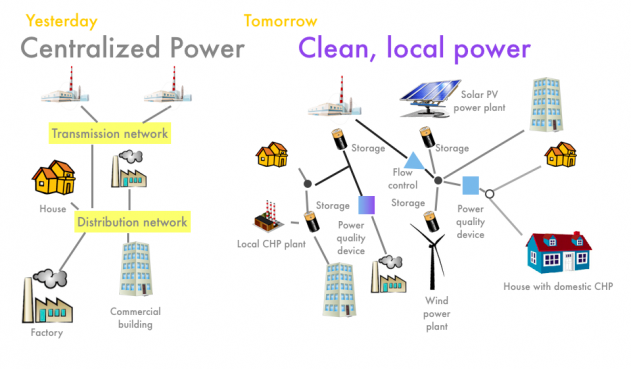
What are the challenges when DER meets the grid?
-How to manage voltage
-How to predict supply and demand
-How grids can connect more DER cheaper and faster while reducing costs and operating within the technical limits of the power system
-How to overcome the technical and commercial challenges of managing a grid integrating DER
Why are Distributed Energy Resources so Transformative?
DER is a faster, less expensive option to the construction of large, central power plants and high-voltage transmission lines. DERs offer consumers the potential for lower cost, higher service reliability, high power quality, increased energy efficiency, and energy independence. The use of renewable distributed energy generation technologies can not only provide a significant environmental benefit but cost-savings and a more resilient energy system.
Virtual Power Plants are Becoming a Driving Force in the Power Sector
The VPP is an IT structure that integrates different types of distributed energy sources, flexible consumers, and energy storage with each other and with other market segments in real-time through a smart grid. The VPP gives positive effects on the electricity grid like ensuring energy security, improving grid stability and reliability, optimization of energy resources use, lowering the load-demand response, regulation of frequency, using operational reserves, management of peak demand.
– Ropuszyńska-Surma, Edyta & Borgosz-Koczwara, Magdalena. (2019). The Virtual Power Plant – A Review Of Business Models. E3S Web of Conferences. 108. 01006. 10.1051/e3sconf/201910801006.
Distributed Energy Resources (DERs) are becoming more common every day across grids across the world, from solar panels and batteries to EV chargers and smart appliances, numbers are only expected to grow.
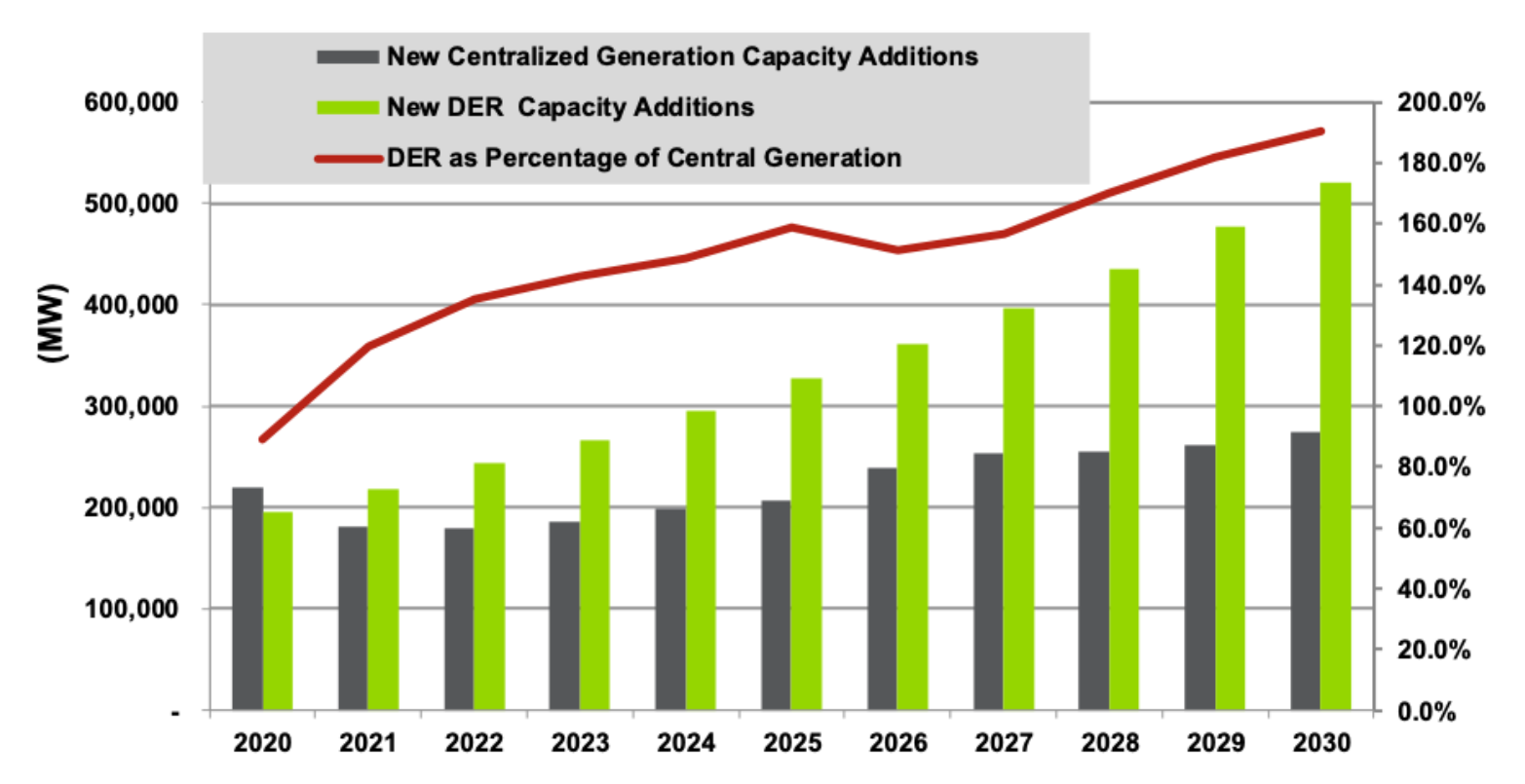
The Future Is Distributed: DER Growth Outpaces Centralized
As a result, new ways of combining these DERs are opening up new options for meeting consumers’ energy needs. Microgrids and VPPs are two of these options that are both seeing rapid growth. It is useful to distinguish between these two options: Both of them are an aggregation and optimization of DERs. The difference is that a microgrid has a confined network boundary and can disconnect from the larger grid to create a power island. In contrast, VPPs can stretch over much wider geography and can grow or shrink depending upon real-time market conditions.
The DER portfolio in a VPP can be the same mix (solar, batteries, smart appliances, wind turbines, even a generator) as a microgrid. However, the primary value proposition for a VPP is that the services from these DER assets flow upstream to a utility or transmission grid operator; services are not sealed off into an island from the larger grid.
Therefore, a VPP can only be created if there is a market to sell its power and services to, which means VPPs are very dependent on regulations, unlike microgrids which can be created anywhere, and are not as dependent on market structures. A microgrid can island from the main grid, while VPPs cannot. However, if a microgrid starts to sell its combined services to the grid—such as demand response—it becomes a virtual power plant.
How does a VPP work?
Virtual power plants represent an ‘Internet of Energy'”, These systems tap existing grid networks to tailor electricity supply and demand services for a customer. VPPs maximize value for both the end user and the distribution utility using a sophisticated set of software-based systems. They are dynamic, deliver value in real time, and can react quickly to changing customer load conditions. – Peter Asmus of Pike Research
In a VPP all units (producing, consuming and storage) are connected to the VPP’s central control system so all assets can be efficiently monitored, coordinated and controlled by the central control system. Control commands and data are transmitted via secured data connections, shielded from other data traffic by encryption protocols.
In addition to operating every individual VPP unit on an optimized schedule, the central control system uses algorithms to adjust to balancing reserve commands from transmission system operators, just as larger conventional power plants do. This bidirectional data exchange between the individual units and the VPP enables the transmission of control commands as well as real-time data on the capacity utilization of the networked units. For example, the feed-in of wind energy and solar plants, as well as consumption data and electricity storage charge levels, can be used to generate precise forecasts for electricity trading and scheduling of the controllable power plants.
There Were 3 VPP Market Segments, But Now Its Really All Mixed Use
The industry has been discussing VPPs for more than a decade now (the world’s first is considered to be German Utility RWE’s VPP which has been running since October 2008) but the meaning of the term has evolved along with improving technology. It is useful to divide the VPP market into three sectors:
1. Demand Response-VPPs: The DR-VPP is the most mature of VPP segments. Here demand peaks are met by ramping down loads in near real time instead of firing up fossil fuel peaking power plants. This DR-VPP application is the largest commercial segment in the US, which has the largest DR market in the world.
2. Supply-Side VPPs: In SS-VPPs application, a portfolio of typically diverse resources is pieced together and managed with smart grid technology so that supply balancing is orchestrated to mimic services that a conventional 24/7 coal, gas or nuclear plant would provide. Most of these VPPs are focused on variable renewable sources, though there are supply-side VPPs that aggregate and optimize diesel generation and other fossil assets. Largely pioneered in Europe, SS-VPPs look like they may have already peaked in terms of market traction.
3. Mixed-Asset VPPs: The MA-VPP is the ultimate goal for VPPs, as this segment manages generation, load, and energy storage together to provide a synergistic sharing of grid resources to squeeze out more value and cut capital costs. This segment has been growing fast over the past 2 years and is now the industry standard. In this sector, any node on the grid represents a potential solution to both regional distribution networks and wholesale transmission grid pool supply and reliability challenges.
VPPs Are Taking Off Around The World – Except For Latin America
Total global VPP capacity in 2019 was just below 4 GW, and this is forecast to grow to 35 GW by 2028, a compound annual growth rate (CAGR) of 27.1%.
Total VPP Market Forecast in $m and MW
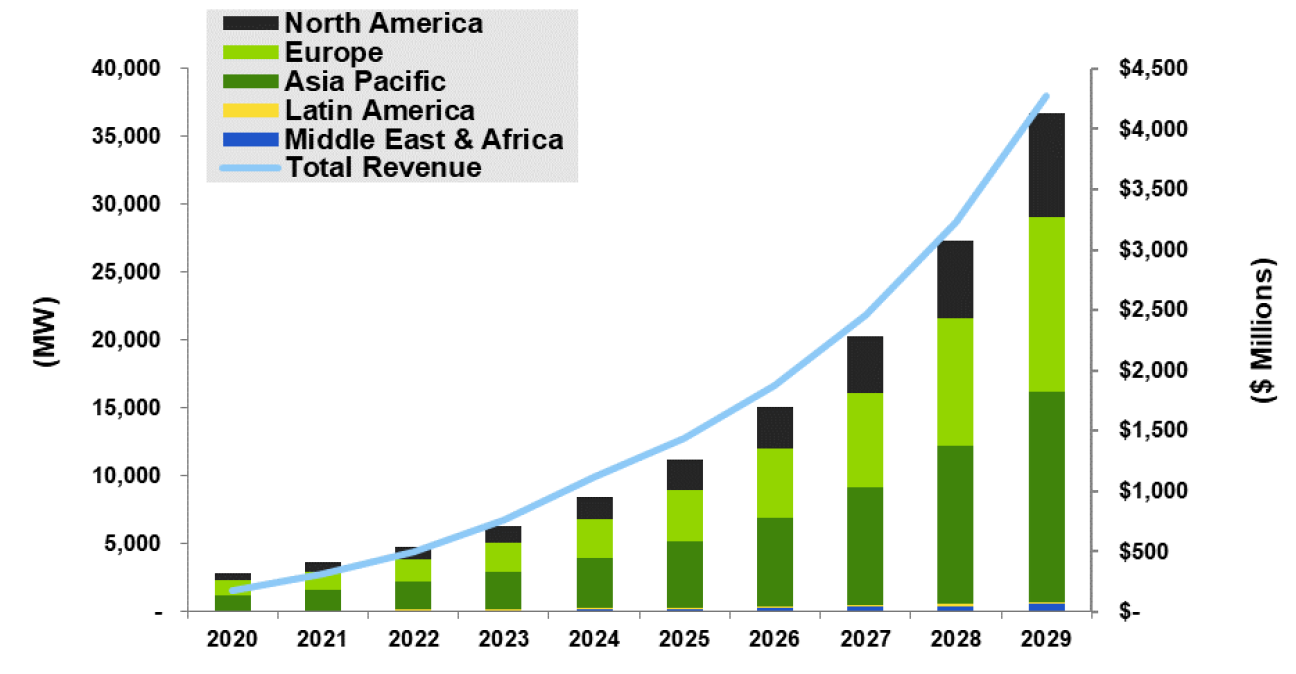
Leading VPP Examples Around The World
South Australia: ‘Big batteries’ a key part of state government’s decarbonization and modernization strategy, VPP may soon be the world’s largest.
In South Australia, AGL Energy reports they are aggregating the battery systems of 1,000 households with rooftop solar PV in Adelaide to create a virtual power plant (VPP) totaling 5 megawatts in capacity. The energy retailer is working with software provider Enbala to optimize DER coordination and maximize the overall benefits across the utility customer, wholesale markets (energy and ancillary) and network service value streams.
“This battery is another step in the state’s energy transition while at the same time allowing a rapid response to changes in renewable generation when our customers and communities need it.”
– AGL CEO Brett Redman
AGL’s VPP could be the largest in the world sometime in 2021; it is among the most sophisticated due to the variety of vendor assets involved (three different kinds of batteries) and grid services rendered. Almost 25 percent of homes within AGL’s service territory (1.7 million prosumers) feature rooftop solar PV systems, illustrating the scope of potential assets available to include in VPPs in Australia, one of the world’s hotspots when it comes to DER and VPP innovation.
For some lessons learned from the many VPP demonstration projects happening in Australia please see AEMO’s excellent website.
Jeju Island in South Korea Aiming To Be Carbon-Neutral Paradise

In South Korea, Jeju Island is building a state of the art VPP exploring the nexus between smart transportation, smart electricity services and smart grid upgrades. South Korea since 2009 has been pursuing aggressive advances in smart grid technology with Jeju Island serving as a pilot. Jeju Island’s plans to rely upon 100 percent carbon-free energy for electricity and transportation by 2030 aiming to become the world’s ‘first carbon-free island’. The PEV population is forecast to reach 371,000 by 2030, supported by 75,513 charging stations, a substantial potential grid resource. EVs and their ability to provide grid support will be managed by recognizing the state of charge of the mobile batteries while optimizing the market-responsive behavior of the EV aggregators. The lessons learned from these tests will help this EV fleet become an integral part of the project’s strategy to address the variability of wind and solar energy as all fossil fuels are phased out.
Further reading: The Path To A Carbon-Free Island
Japan Plans Largest VPP In The World
Japan remains short on capacity following the Fukushima nuclear plant accident in 2011, and has a long, long history exploring DERs. As a result, it is developing the largest behind-the-meter (BTM) virtual power plant (VPP) in the world. The VPP will aggregate approximately 10,000 DERs, initially focussing on batteries, but with a growing scope to include solar, EVs and smart home thermostats, and will also be capable of being transformed into a microgrid. The project will provide residential consumers with batteries at no upfront cost, and in the event of a power outage, will act as an emergency power source for the resident. In exchange, customers will allow the company to access the batteries in market capacity transactions.
The falling costs of solar and storage, combined with the opening up of opportunities in capacity markets mean that demand response and DERs are becoming a key component of our daily operations.
– Masahiro Kobayashi, President & Representative Director of ENERES Japanese energy management services company
Japan and South Korea both pledged to become carbon neutral by 2050 in October, 2020. Japan is the world’s third-largest economy and fifth-biggest emitter. The Republic of Korea is the world’s 11th largest economy and sixth largest exporter. In July, the country also announced a USD 35 billion New Green Deal on ending investment in coal.
England’s Most Advanced VPP Completed in 2020
In Cornwall, England, Centrica and sonnen have installed a network of 100 domestic batteries to form the UK’s most advanced VPP.
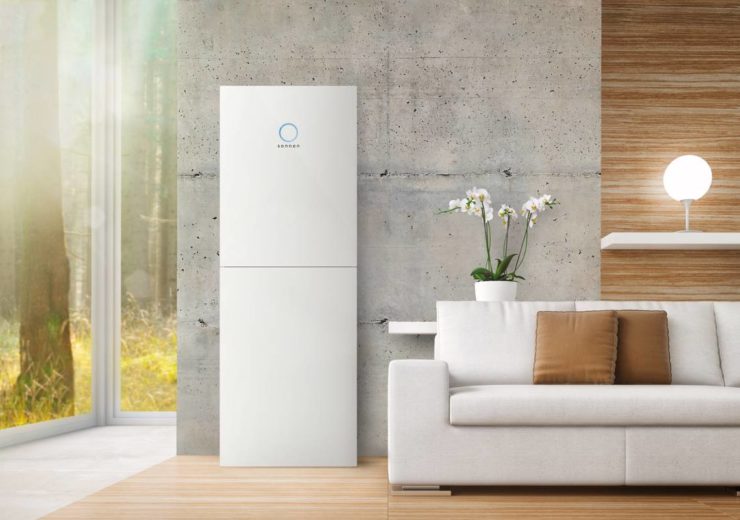
Cornwall’s local energy market will deliver up to 585 kilowatt-hours of battery capacity and up to 169 kilowatts of solar power to local grid company Western Power Distribution and to the national transmission system operator, National Grid.
The residential storage assets will be aggregated through a platform provided by Shell-owned (and Avolta Energy partner) energy storage company sonnen.
“The digital energy transformation, towards a clean energy system, is taking place all over the world and our technology is an important key to its success. sonnen is the first provider in the UK to prequalify with a virtual power plant of decentralised home storage systems. Every megawatt provided across the network replaces one that would have been generated by conventional fossil fuel power stations.”
– Jean-Baptiste Cornefert, Managing Director, sonnen eServices
Cornwall’s local energy market will deliver up to 585 kilowatt-hours of battery capacity and up to 169 kilowatts of solar power to local grid company Western Power Distribution and to the national transmission system operator, National Grid.
The residential storage assets will be aggregated through a platform provided by Shell-owned (and Avolta Energy partner) energy storage company sonnen.
Latin America Is Seeing Some Progress On Microgrids, But Almost Nothing On VPPs
Regional Global Microgrid DER Capacity and Revenue Forecast
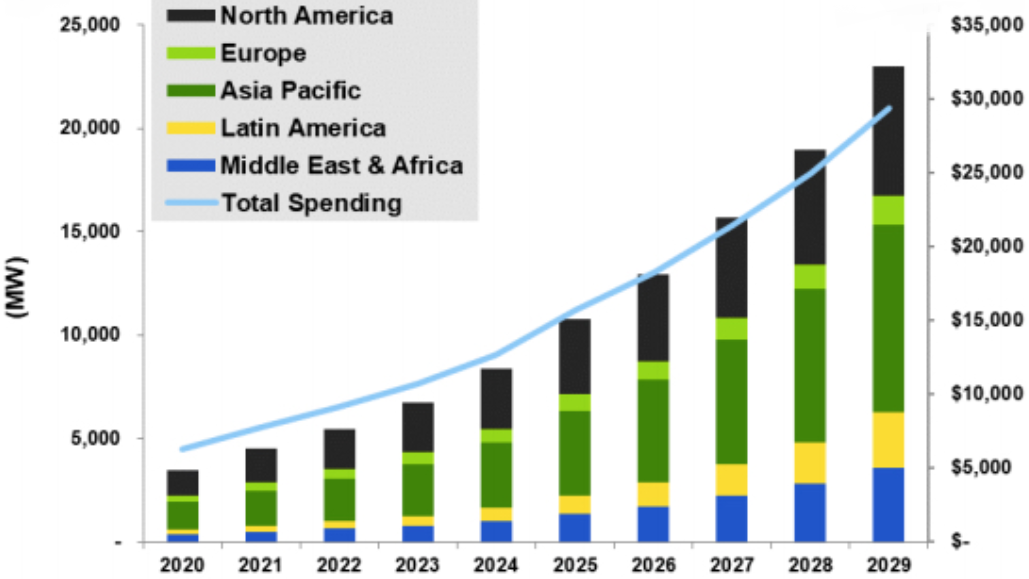
Latin America is nowhere to be seen on the VPP forecast, however it is the fastest growing regional microgrid market due in part to the proposed microgrid program in Puerto Rico, which could represent a $14 billion long-term total investment. The Puerto Rico Electric Power Authority has proposed to reconfigure the island’s grid to be made up of eight large-scale microgrids of roughly 500 MW each. This setup is intended to avoid the massive power failures that struck Puerto Rico in 2017 due to Hurricane Maria. These large-scale microgrids — i.e., mini-grids — support clusters of critical transmission and distribution infrastructure, projects that meet the definition of utility distribution microgrids. Within these larger systems are multiple smaller microgrids at individual businesses, local governments, and other critical facilities.
Latin America Is Lagging on VPPs Because of Lagging Regulations
VPPs need a market mechanism to sell their services into the grid, absent this ability to monetize the full value of the services provided by the aggregated DERs – a sub-optimal amount of them will be provided. In other words, they will not happen without the type of energy market reforms we have seen in much of the US, Europe, Asia and Australia.
Call Avolta Energy To Unlock Energy Reliability, Resiliency and Flexibility.
The reliability that is inherent to a VPP and microgrid means that they are more resilient to natural disasters and are proving to deliver savings. If you are a property developer here in Central America looking to save money and increase resiliency by building a microgrid into your development, please get in touch, and we can go through your options at no cost to you. And if the market regulations change in the future and a path to selling grid services becomes clear, Avolta Energy will be happy to work with you and make that happen too.



